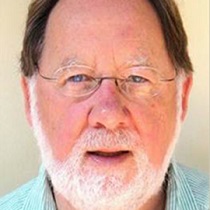- Behaviour
Brain Gain: Dopamine, Emotions and Behaviour Change
Individuals trust what their own brains tell them from their own experience in preference to what any authority, however august, says. That is what makes shifting policy into social action so difficult.
BRAIN GAIN: In the January 10 issue of Scientific American Christoph Korn (a neuroscientist interested in the neural mechanisms of decision-making) observes that a bride walking down the aisle is unlikely to agree, in the remote event of her progress being interrupted for discussion, that there is almost a fifty percent chance that she will, in due course, divorce. We humans, he says, underestimate the probabilities of adverse events and overestimate the probabilities of welcome events.
Why is that? There is a single neurotransmitter chemical involved in decision- making and what is called error prediction/correction. That chemical is dopamine. It is heavily involved in motivational processes and reward, pleasure and addiction. It is triggered and floods the brain to a greater or lesser extent when an event happens that produces desired outcomes and subsequently when the same event or the expectation of it happens again. If the expectation is unfulfilled then it starts learning not to switch on. This is what makes error correction possible, which in turn sets up internalized probabilities.
The trouble with big events, like marriage failure, the possibility of a major accident, or a nuclear disaster, is that for most people there is no first-hand experience on which to draw: so no predictive bases have been built up. We can think about them but not feel them, so such situations have no real meaning. It is why scare tactics through advertising to change people’s behaviour, as on cigarette packets, rarely work.
Individuals trust what their own brains tell them from their own experience in preference to what any authority, however august, says. That is what makes shifting policy into social action so difficult.
People trust their own brains rather than someone else’s unless they have been taught to trust others’ in preference to their own: or, like children, have still-developing brains that can be moulded to become the takers of, say, the anti-smoking message to their parents: or there are well-established trust-based relationships that have been tested and found functional as in the best teams where trust resonates.
The nature of trust is also very closely connected with an individual’s sense of self. The way a Self is constructed – the neurobiology of the Self - is a larger question for a later piece, but the place of trust in the whole of the emotional system that underpins the Self is like this.
There are eight basic emotions. (Last month’s column indicated there were seven, which was a curious error of unknown origin in its author’s brain and predictably not likely to happen again). Five of the eight – fear, anger, disgust, shame and sadness - underpin escape/avoidance/survival behaviours such as politicking, presenteeism, fudging data, making compensation claims, and anything else that preserves the well-being of the individual as against the organization.
Then there is one emotion – surprise/startle – that sets up expectations at a high level. It is a potentiator. Disney World, Alton Towers and stand-up comedians know all about the way that surprise and startle can be profitable, especially when surprise/startle swings into the first of the two emotions that are the great drivers producing sustainable human energy – excitement/joy and trust/love. With those in play, anything is possible. Without them, it’s a hard grind.
Oddly enough most organizations think mobilising the escape/avoidance emotions will get results. After a fashion, it does, but at a very high cost in terms of effort, money and exhaustion. But nothing new or creative will happen that way. To achieve those great organizational goals create the conditions under which individuals actively want to be doing what they are doing and stretch themselves for more. The basis of that is active trust, which only the leader can generate. How the leader does it is for next month. istoph Korn, The Neuroscience of Looking on the Bright Side
ARTICLES YOU MIGHT LIKE
RESEARCH
Harvard and BC University study values conversational receptiveness in our polarized times
DEVELOPING LEADERS QUARTERLY MAGAZINE AND WEEKLY BRIEFING EMAILS
































